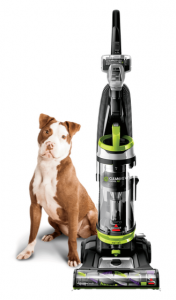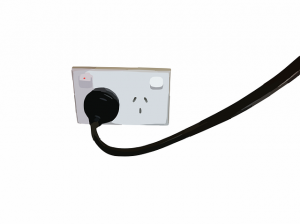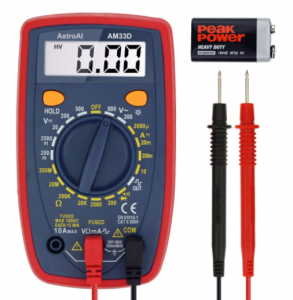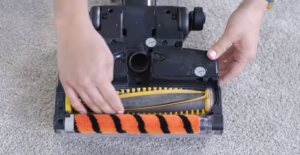
In your mind, you should be done vacuuming within the next 15, 20, or 30 minutes. But just as you roll your sleeves to hit the floor, your vacuum won’t turn on! Why? This is one of the most frustrating things because you don’t know where to start.
Today, we let you in on a few things about why vacuum cleaners fail to turn on. While most of the issues can be sorted quickly at home, some need professional intervention. You can consult a repairer near you, or the manufacturer if the warranty is still running.
Why Your Vacuum Cleaner Won’t Turn On
For you to fix a vacuum that won’t turn on, you must know what the exact issue is. Below, we take look at the most common culprits:
1. No power from the outlet

Well, this seems quite simple, but a faulty power outlet could be the only reason that your vacuum isn’t working. But before you panic and call 911, ensure that the switch is “On” and not “Off”. If the switch is in the correct position, it means the power outlet could be faulty.
To confirm, change the power outlet and see if the vacuum will turn on. If it does, you’ve found the source of the problem. However, if that is the only available outlet, try connecting another device to confirm whether the power outlet is working fine.
While this is rare, it could be the sole problem. So, if you happen to notice that the outlet is not receiving any power, call in an electrician to fix it – unless you have the necessary skillset yourself. In the meantime, switch to another power outlet or use an extension cord to get the job done.
2. Incomplete circuit in the vacuum
For any vacuum to turn on there must be a complete connection between the power source, the plug, the cord, switch, and the motor. So, if anything is preventing the circuit from being complete, the vacuum will not work.
More often than not, this will be the main reason why your vacuum does not turn on. Possible causes of an incomplete circuit in a vacuum cleaner include:
- Faulty plug
- A broken wire inside the power cord
- Faulty thermal cut-off or fuse
- Faulty motor
- Formation of thick carbon on the parts inside the switch
The easier thing would be to take the vacuum for diagnosis by an expert, but if you have time and a few tools, you can Do It Yourself. Whether you have a Shark, Bissell, Dyson, Electrolux, Hoover, Miele, or any other brand, the process is more or less the same.
You need a digital multimeter (preferably one with a continuity alarm) to test the various parts of the vacuum to confirm whether or not there is continuity. Remember to check your user manual for the exact steps of taking the vacuum apart.

Once you find what is causing an incomplete circuit, repair or replace the part and you’re good to go. For a step-by-step guide on how to check which part is faulty, watch this very informative YouTube video by electronicsNmore:
If you follow these steps and find that the circuit is complete, it means that the problem is somewhere w0else. So, you need to go through these next points and eliminate each one till you find the true cause of the breakdown.
3. Automatic shut-off
Some vacuum cleaners can turn off due to overheating. So, before you start looking for a screwdriver and a multimeter, touch the vacuum to feel if it’s hot. If it is, give it some time and try to turn it on again.
Because this may be a sign that the vacuum has technical problems especially on the motor, seek professional assistance. This will help prevent more damage that could end up costing more money.
4. Clogged filters
Clogged filters prevent air from passing through the vacuum freely. Apart from resulting in poor suction, this can also cause the vacuum not to turn on. To solve this issue, you don’t need an expert. Simply remove the filters and clean them (if they are washable) and still in good shape.
If the filters are not washable, it’s time to replace them. Always check your user manual on how to remove and replace filters to avoid causing more damage to the vacuum.
5. Clogged/blocked hose or wand

Due to kinking and folding, hoses tend to clog from time to time. Also, check the wand for any blockage. Though this is not common, when hoses clog, they can cause the vacuum to stop working. So, this is one of the things to check if your vacuum won’t turn on.
6. The bag or dust cup is too full
Once the vacuum fills up completely, it can fail to turn on since airflow is blocked. So, empty the bag or dust canister and try turning the vacuum on to know whether that’s the only problem it has. If it doesn’t turn on, check other possible causes.
As a rule of thumb, always empty the dirt once it reaches half full – or once it reaches the “Max” line on the dust cup. If you have a bagged vacuum, always empty once the full-bag indicator light turns on. Also, you should empty the vacuum any time you notice a reduction in suction.
While at it, wash the dust cup under running water before re-installing it into the vacuum (for bagless vacuums).
If yours is bagged, consider replacing the bag if you’ve used it for long and the suction is significantly less even after emptying. This could mean that the bag is worn out and may also result in allergens escaping back into the air.
7. Tangled brushroll (beater bar)
Your vacuum may not be working because the brushroll can’t spin. This is caused by the accumulation of large debris and tangling of human and pet hair. So, look for the steps to remove the brushroll in the user manual, and then remove the hair and any debris.
That should solve the issue. If you cannot pull all the hair off by hand, use a pair of scissors to cut it and try pulling again.
How to Fix a Vacuum Cleaner that Won’t Turn On – Checklist
To quickly figure out why your vacuum cleaner isn’t turning on or working, check the following items:
- Is the vacuum plugged in?
- Have you pressed the switch on?
- Is the power outlet faulty?
- Is the circuit complete?
- Could the vacuum have switched itself off due to overheating?
- Are the filters clogged?
- Is the hose blocked?
- Did you forget to empty the dirt on time?
- Is the brushroll spinning?
If you find that your vacuum can’t turn on, use this checklist to find the cause and hopefully fix the issue. While most of the problems can easily be fixed at home, some are technical and may need expert intervention.
For example, if it involves an incomplete circuit, the motor or any other complex part may be faulty. Unless you know how to check for such errors and use the right tools to solve them, it’s best to take the vacuum to a repair shop. Alternatively, you can contact the manufacturer if the warranty is still running.
Always remember to follow the user manual in case you want to remove any part of the vacuum since each model is different. Also, ensure that the vacuum is unplugged before removing the filters, dust cup/bag, or if you want to do any repair yourself.
Conclusion
When your vacuum fails to turn on, you may feel like that’s the end. However, it may be just as simple as plugging in the vacuum and turning on the switch. Other minor causes include clogged filters and blockages in the wand, hose, or brushroll.
But some issues are too technical, especially those that involve faulty power cords, switches, and motors. So, unless you have some experience or are brave enough to experiment, take the vacuum to a professional for troubleshooting and repair.
You can also make use of the warranty if it’s still running.
Today, we focused a lot on corded vacuums, but the procedure is the same for cordless vacuums. Well, unless it’s the case of low battery charge or a dead battery. Other causes and their solutions remain the same.
On the other hand, robot vacuums are more complicated. Therefore, it’s advisable to take them to an expert for diagnosis and repair. You can also engage the manufacturer to see if the issue is covered under warranty.